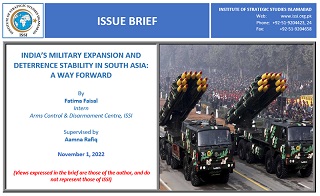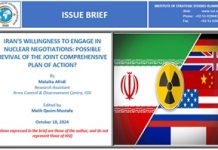Construction of India’s first two of six more fast breeder reactors will reportedly begin in October 2022.[1] The expansion of plutonium production capacity, on which its nuclear forces depend, has paced up unprecedentedly. Indian Prime Minister Modi aims to increase India’s nuclear fleet by more than three times over the next decade.[2] This takes place in the context of several potentially destabilising developments in India’s nuclear arsenal. What are some of these developments and how do they disturb the already fragile deterrence framework of South Asia? More importantly, what can and should Pakistan do to ensure that deterrence is maintained and the arms race is contained?
The fluctuations in South Asia’s strategic landscape are owed to technological, military, political and doctrinal developments. For instance: India’s offensive military doctrine, the “Cold Start or Pro-Active Operations” and Pakistan’s defensive yet resolute response in the form of Full-Spectrum Deterrence (FSD), India’s launch of the nuclear submarine for operationalising second-strike capability, development of Inter-continental Ballistic Missile (ICBM) and acquisition of Ballistic Missile Defence (BMD) and S-400 Air defence system, whose second delivery took place in April 2022. By emboldening India with a false sense of confidence and raising counterforce temptation to launch preemptive attacks without fear of reprisal, these sophisticated systems disturb their mutual deterrent relationship, which rested on retaliatory ability. Coupled with the progress on technology to deploy Multi-independently targetable re-entry vehicles (MIRVs), testing of Hypersonic Technology Demonstrator Vehicle (HSTDV) and likely preparation for the H-Bomb would further exacerbate the security dilemma that defines regional dynamics.















